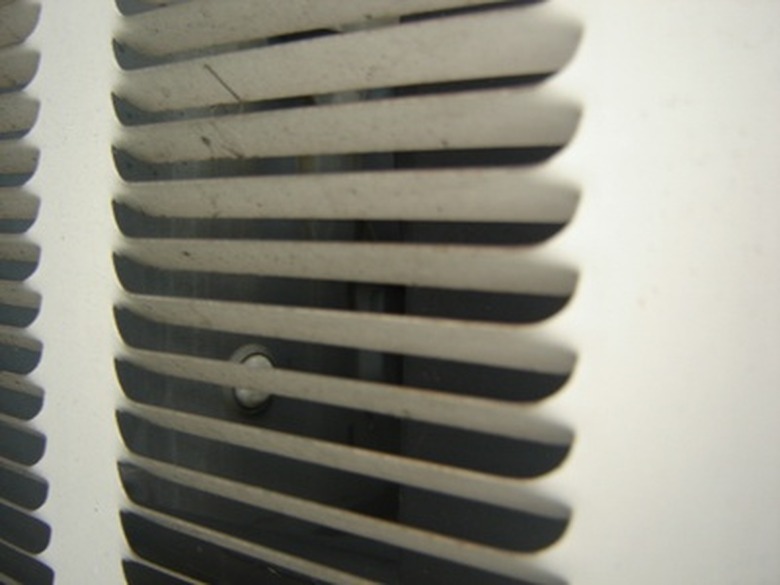How To Clean Up Residential Fiberglass Contamination
Things Needed
-
Gloves
-
Flashlight
-
Eye protection
-
Plastic wrap
-
Vaccuum
-
Garbage bags
-
Mask
Fiberglass is a synthetic is glass mineral fiber used in many home insulation projects. Although flexible and environmentally friendly, these tiny pieces of glass can cause fiberglass contamination, which poses a serious risk for residents and homeowners. Symptoms of fiberglass contamination include bleeding noses, bloody sputum, wheezing and asthma-like symptoms, swollen eyes and irritated skin. Fiberglass contamination can degrade a normal person's health swiftly, often within a matter of days. If you discover shiny pieces of dust around the home, your home might have fiberglass contamination and requires immediate attention. Relocation is recommended until fiberglass contamination is treated by a professional.
Step 1
Inspect all the rooms within your home for fiberglass particles. Wearing a mask to protect your nose and mouth, and gloves to protect your hands, shine a flashlight into each room with the lights out. Check for sparkling strands of dust particles, an indication of fiberglass contamination.
Step 2
Isolate the source of contamination. Fiberglass discovered in one or two rooms means individual heating and cooling systems are contaminated, Presence of fiberglass throughout the house indicates the central HVAC system may be the culprit. Turn off any system which appears to be circulating broken fiberglass.
Step 3
Replace the offending HVAC systems if professional repair cannot be done. Purchase new systems, which don't contain fiberglass. Hire a professional service to handle the HVAC removal and installation.
Step 4
Cover HVAC vents and sources of contamination with plastic wrap. Open the windows to increase natural ventilation and and circulation.
Step 5
Clean every room in the house, discarding items you don't intend to keep. Store saved, clean items in dry plastic bins. Vacuum each room, including window treatments and fabric-covered furniture several times. Strip bedsheets, clothing and washable linens and wash them according to manufacturer's instructions to remove fibers.
Step 6
Clean all house vents and replace air filters. Discard them in a plastic bag to prevent spilling fiberglass particles on the floor during removal and replacement.
Step 7
Walk through the house and re-inspect for signs of leftover fiberglass residue. Vacuum, clean and wipe down any surfaces that require attention, using the glove and flashlight method. Resume normal use of the house once contamination has been fully treated.
Tip
Clean one room at a time. Several cycles of vacuuming may be required before treatment is complete.
Warning
Fiberglass contamination can irritate the lungs and internal airways and create lasting health problems. It's best to relocate until contamination is treated thoroughly.
